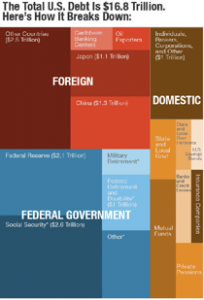 When the stock market collapsed in 2008, the government deemed Wall Street’s ailing banks “too big to fail” and provided them with a multi-billion dollar bailout. The emergency loan ultimately saved the banks, but has provided no shortage of controversy ever since. To the financial sector’s critics, many of the problems caused by these banks stemmed from their enormous size. In fact, nothing much has changed since the financial collapse: the same five banks that dominated bond underwriting and Continue reading
When the stock market collapsed in 2008, the government deemed Wall Street’s ailing banks “too big to fail” and provided them with a multi-billion dollar bailout. The emergency loan ultimately saved the banks, but has provided no shortage of controversy ever since. To the financial sector’s critics, many of the problems caused by these banks stemmed from their enormous size. In fact, nothing much has changed since the financial collapse: the same five banks that dominated bond underwriting and Continue reading




